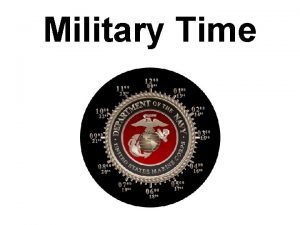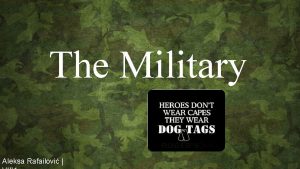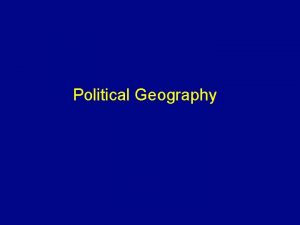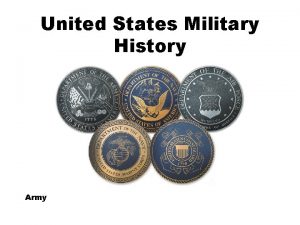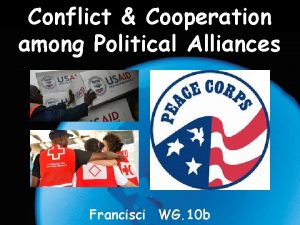Cooperation among States Political and military cooperation The











- Slides: 11

Cooperation among States • Political and military cooperation – The United Nations – Regional military alliances • Economic cooperation – The European Union

United Nations Members Fig. 8 -1: The UN has increased from 51 members in 1945 to 191 in 2003.

United Nation Forces • U. N. members can vote to establish a peacekeeping force and request states to contribute military forces. • During the Cold War era, U. N. peacekeeping efforts were often stymied because any one of the five permanent members of the Security Council could veto the operation. • Because it must rely on individual countries to supply troops, the United Nations often lacks enough troops to keep peace effectively. • Despite its shortcomings the United Nations represents a forum where, for the first time in history, virtually all states of the world can meet and vote on issues without resorting to war.

Super Powers in History • In addition to joining the United Nations, many states joined regional military alliances after World War II. • During the Cold War era, the United States and the Soviet Union were the world’s two superpowers. • Before then, the world typically contained more than two superpowers. • During the Napoleonic Wars in the early 1800 s, Europe boasted eight major powers. • Before the outbreak of World War I in the early twentieth century, eight great powers again existed. • When a large number of states ranked as great powers were of approximately equal strength, no single state could dominate.

Super Powers Before WWII • • Instead, major powers joined together to form temporary alliances. A condition of roughly equal strength between opposing alliances is known as a balance of power. Historically, the addition of one or two states to an alliance could tip the balance of power. The British in particular entered alliances to restore the balance of power and prevent any other state from becoming too strong.

Era of Two Superpowers • In contrast, the post—World War II balance of power was bipolar between the United States and the Soviet Union. • Other states lost the ability to tip the scales significantly in favor of one or the other superpower. • They were relegated to a new role, that of ally or satellite. • Both superpowers repeatedly demonstrated that they would use military force if necessary to prevent an ally from becoming too independent.

Military Cooperation in Europe • • • After World War II, most European states joined one of two military alliances dominated by the superpowers: NATO or the Warsaw Pact. NATO and the Warsaw Pact were designed to maintain a bipolar balance of power in Europe. In a Europe no longer dominated by military confrontation between two blocs, the Warsaw Pact and NATO became obsolete. Rather than disbanding, NATO expanded its membership in 1997 to include several former Warsaw Pact countries. The Organization on Security and Cooperation in Europe (OSCE) has 55 members, including the United States, Canada, and Russia, as well as most European countries. Although the OSCE does not directly command armed forces, it can call upon member states to supply troops if necessary.

Other Regional Organizations • • The Organization of American States (OAS) includes all 35 states in the Western Hemisphere. Cuba is a member but was suspended in 1962. The OAS promotes social, cultural, political, and economic links among member states. A similar organization encompassing all countries in Africa is the Organization for African Unity (OAU). Founded in 1963, the OAU has promoted the end of colonialism in Africa. The Commonwealth of Nations includes the United Kingdom and 53 other states that were once British colonies. Commonwealth members seek economic and cultural cooperation.

Economic Cooperation • The era of a bipolar balance of power formally ended when the Soviet Union was disbanded in 1992. • The world has returned to the pattern of more than two superpowers. • But the contemporary pattern of global power displays two key differences. • The most important elements of state power are increasingly economic rather than military, (and) the leading superpower in the 1990 s is not a single state.

The European Union and NATO Fig. 8 -12: NATO and the European Union have expanded and accepted new members as the Warsaw Pact and COMECON have disintegrated.

European Boundary Changes Fig. 8 -13: Twentieth-century boundary changes in Europe, 1914 to 2003. Germany’s boundaries changed after each world war and the collapse of the Soviet Union.













